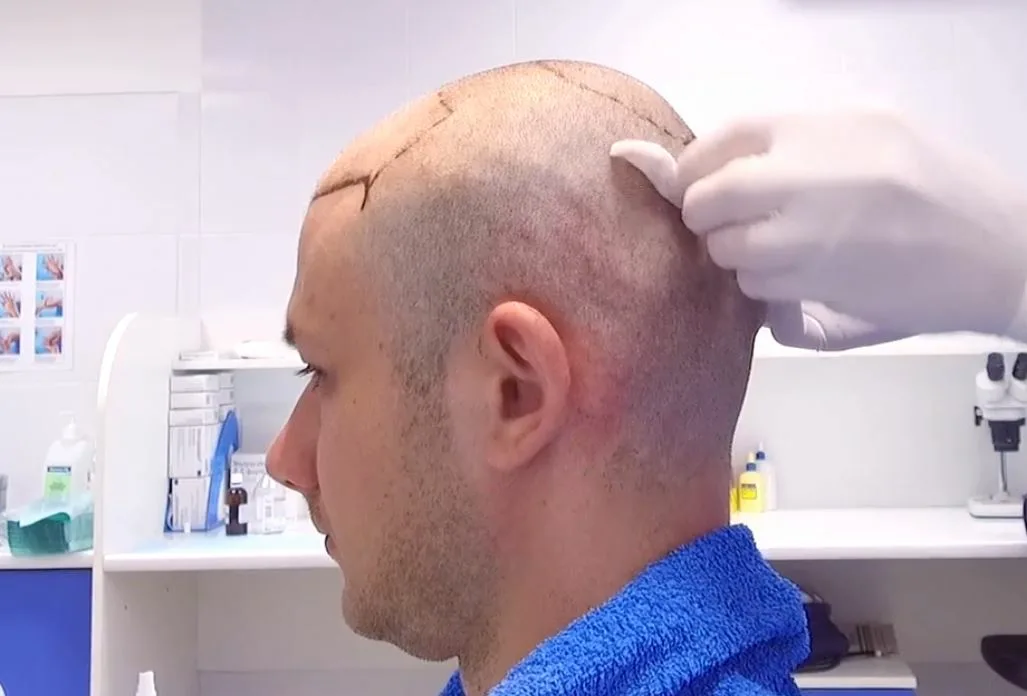Understanding Hair Loss and the Promise of Restoration
Hair loss is a common concern affecting millions worldwide, often leading to diminished confidence and self-esteem. While various factors contribute to hair thinning or baldness, including genetics, hormonal changes, and lifestyle, advancements in hair restoration have provided effective solutions. Hair Transplant in UAE (زراعة الشعر في الإمارات العربية المتحدة) surgery, a sophisticated procedure, offers a permanent and natural-looking way to address hair loss by redistributing healthy hair follicles to areas of thinning or baldness. The United Arab Emirates has emerged as a leading destination for hair transplant procedures, renowned for its commitment to cutting-edge technology and patient-focused care.
The Foundation: The Initial Consultation
The journey towards hair restoration in the UAE begins with a thorough and personalized consultation. This initial meeting is crucial for several reasons. You’ll have the opportunity to articulate your specific concerns regarding hair loss, your desired outcome, and your aesthetic goals. A qualified hair restoration professional will then conduct a comprehensive evaluation of your scalp and hair. This assessment typically involves examining the pattern of hair loss, assessing the density and quality of your existing hair, and determining the strength and suitability of your donor area – the region from which hair follicles will be harvested.
During this discussion, the professional will also consider your medical history to ensure you are a suitable candidate for the procedure. This collaborative approach ensures that a customized treatment plan is developed, outlining the most appropriate technique, the number of grafts required, and a realistic expectation of the results. This is your chance to ask any questions you may have about the process, the recovery, and the long-term outlook.
Exploring Hair Transplant Techniques
Two primary techniques are predominantly used for hair transplant procedures in the UAE, each with its own advantages:
Follicular Unit Extraction (FUE)
FUE is a minimally invasive technique that involves extracting individual hair follicles directly from the donor area, typically the back or sides of the head. These follicular units, each containing one to four hairs, are carefully removed using a small punch tool. The tiny incisions made during extraction heal with minimal, almost undetectable scarring. Once harvested, these individual grafts are then meticulously implanted into the recipient areas where hair is thinning or absent, ensuring natural angles and density. FUE is popular due to its less invasive nature and quicker recovery time for the donor area.
Follicular Unit Transplantation (FUT)
FUT, sometimes referred to as “strip harvesting,” involves removing a thin strip of scalp from the donor area, usually from the back of the head. This strip is then meticulously dissected under a microscope to separate individual follicular units. A fine linear scar will remain in the donor area, which is typically well-concealed by surrounding hair. Similar to FUE, these grafts are then carefully implanted into the recipient areas. FUT is often preferred for individuals requiring a larger number of grafts in a single session.
The choice between FUE and FUT depends on various factors, including the extent of hair loss, the quality and quantity of the donor hair, and individual preferences regarding scarring and recovery. The hair restoration professional will guide you in selecting the most suitable technique during your consultation.
The Surgical Process: What to Expect
Hair transplant surgery in the UAE is generally performed under local anesthesia, meaning you will be awake but the scalp will be completely numbed, ensuring a comfortable experience. The duration of the procedure varies significantly based on the number of grafts being transplanted and the complexity of the case, typically ranging from a few hours to an entire day, or even spread across two consecutive days for very extensive cases.
Once the anesthesia takes effect, the selected harvesting technique (FUE or FUT) will be meticulously executed to extract the hair follicles. The extracted grafts are then carefully prepared and, in the recipient area, tiny incisions are made where the new hairs will be implanted. The professional will meticulously place each graft into these incisions, paying close attention to the natural direction and angle of hair growth to ensure a seamless and natural-looking result. The precision involved in this step is crucial for the aesthetic outcome of the transplant.
The Recovery Journey: Nurturing New Growth
The period following a hair transplant is vital for the successful establishment of the newly transplanted follicles. While experiences vary, here’s a general overview of the recovery process:
Immediate Post-Operative Phase (Days 1-7)
Immediately after the procedure, you may experience some mild discomfort, swelling, and redness in both the donor and recipient areas. Small scabs will form around each transplanted graft. It is crucial to follow all post-operative instructions diligently. This often includes:
- Gentle Care: Avoiding touching or rubbing the transplanted grafts to prevent dislodgment.
- Head Elevation: Sleeping with your head elevated to minimize swelling.
- Specific Washing Protocols: Using specialized solutions and gentle techniques for washing your scalp as instructed.
- Avoiding Strenuous Activity: Limiting physical exertion to prevent increased blood pressure and potential graft disturbance.
Early Recovery Phase (Weeks 2-4)
During this phase, the scabs will naturally begin to fall off, and it is common for the transplanted hair shafts to shed. This “shock loss” is a normal part of the process and does not indicate a failure of the transplant; the follicle itself remains healthy beneath the scalp. The redness and swelling will continue to subside. You can generally return to most regular, non-strenuous activities.
Growth and Maturation (Months 3-12+)
Around three to four months after the procedure, new hair growth will typically begin. Initially, this hair may appear fine and sparse, but it will gradually thicken and mature over time. Significant growth and density improvements are usually observed between six to nine months. The final results, including full density and maturity of the transplanted hair, can take up to 12 to 18 months to be fully appreciated. Patience is key during this extended growth phase.
Maintaining a healthy lifestyle, including balanced nutrition and avoiding habits like smoking, can support optimal healing and hair growth. Regular follow-up appointments with your hair restoration professional are essential to monitor your progress and address any concerns.
Long-Term Outlook and Considerations
The transplanted hair follicles are typically taken from areas of the scalp that are genetically resistant to the hormones causing pattern baldness, meaning they are designed to grow permanently. Once established, these hairs will continue to grow naturally, just like your existing hair, requiring normal washing, cutting, and styling. While the transplanted hair is permanent, it’s important to remember that underlying hair loss in untreated areas may continue to progress. This is why a comprehensive long-term plan with your hair restoration professional is valuable.
FAQs on Hair Transplant in the UAE
Is hair transplant a painful procedure?
During the hair transplant procedure, local anesthesia is used to numb the scalp, so you should not feel any pain. You may experience some mild discomfort or soreness in the days immediately following the surgery, which can be managed with prescribed medications.
How long does the hair transplant procedure take?
The duration of a hair transplant varies depending on the number of grafts being transplanted and the technique used. It can range from a few hours for smaller cases to an entire day or even two consecutive days for more extensive hair restoration.
When will I see the final results of my hair transplant?
While initial growth may appear around 3-4 months, the final and most noticeable results of a hair transplant typically become apparent between 12 to 18 months after the procedure, as the transplanted hair fully grows in and matures.
Will the transplanted hair look natural?
Yes, when performed by experienced professionals, hair transplant procedures are designed to produce natural-looking results. Attention is paid to the direction, angle, and density of hair growth to seamlessly blend with your existing hair.
Is hair transplant a permanent solution for hair loss?
The hair follicles transplanted are usually taken from areas that are genetically resistant to the effects of hair loss, making the results permanent in those transplanted areas. However, it’s important to note that hair loss in non-transplanted areas may continue if the underlying genetic predisposition persists.









